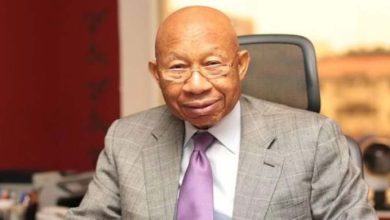Report: 1,686 People Killed in Cult Clashes Across Nigeria

Between January 2020 and March 2025, at least 909 gang violent occurrences occurred throughout Nigeria, killing at least 1,686 persons, according to a new analysis released by SBM Intelligence.
The study, which was made public on Tuesday, was said to have depicted a bleak image of gang and cult-related conflicts that were raging across multiple states, with the greatest number of fatalities occurring in Rivers, Lagos, and Edo.
As to the SBM Intelligence report, Rivers State led the list with 215 recorded fatalities, followed by Lagos with 197 and Edo with 192. These numbers highlight the increasing violence associated with cult conflicts in urban and semi-urban areas.
Cult groups including the Vikings, Icelanders, Eiye, Aiye, Black Axe, and Greenlanders were among the primary protagonists in these conflicts, according to the research.
“The fierce rivalries between Vikings, Icelanders, and Greenlanders, especially in Rivers State, are the main cause of the South-South’s high death toll of over 750,” the paper said.
Worst Hit in the South-South and Southwest
More than 750 killings occurred in the South-South region, with 491 deaths in the Southwest, particularly in Lagos and Ogun, where there have been frequent conflicts between the Aiye and Eiye fraternities.
More than 215 people were killed in the Southeast, mostly in Anambra, where strong cult activity is thought to have combined with disturbances connected to separatists.
The study said, “The Southeast is also very deadly (215+ deaths), with a lot of Viking and Aiye activity in Anambra.”
There have been 204 cult-related deaths in Benue State alone, with continued intercommunal strife involving lesser-known organizations like Scavengers and Chain.
Particular flashpoints were mentioned in the report, such as a fatal conflict in Edo in December 2023 between Black Axe and Eiye cultists that reportedly claimed over 30 lives in a single week.
Between 2020 and early 2025, Edo, Ogun, and Delta States were accountable for 899 fatalities, or more than half of all recorded deaths, and 490 occurrences, or 54% of all cult violence in the country.
Nearly zero cult deaths are reported in Borno, Zamfara, and Kebbi.
According to the research, traditional cult activity is overshadowed by armed banditry and terrorism, which is why the Northeast and Northwest regions combined saw fewer than 30 fatalities.
“States such as Borno, Kebbi, Sokoto, Yobe, and Zamfara reported zero or minimal fatalities primarily because terrorist groups dominate their security challenges,” the report stated.
Sharp increases in cult-related homicides also occurred in other states, including Akwa Ibom (89 deaths), Bayelsa (69), Osun (55), and Kwara (58), indicating that gang networks had expanded beyond of their customary borders.
The Deadliest Gang Violence Year in 2021
According to SBM’s Violence Tracker, with 377 fatalities from 173 occurrences, 2021 was the worst year throughout the review period. Analysts ascribed the increase to political instability and hardship following COVID-19.
Read Also: Why Northerners May Find It Hard to Trust Peter Obi’s Single-Term Promise – IPAC Chairman Sani
Although the average number of fatalities each clash decreased, the number of events peaked in 2024 at 273 occurrences.
According to the research, “this surge might be attributed to the democratization of reporting through social media platforms like𝕏 (formerly Twitter) and TikTok, moving incident accounts beyond traditional police releases.”
On the other hand, 2022 saw a decline with 228 fatalities from 97 occurrences, most likely as a result of short-term ceasefires and security measures.
According to the survey, more young people are joining cult groups as a survival strategy, and it also connected the escalating violence in Nigeria to the country’s deteriorating economy.
Although it stated that recent heightened security efforts might halt the trend, SBM cautioned that incident counts for the first quarter of 2025 are already on course to surpass the total for 2022.
Although there are occasional variations from year to year, the general trend indicates ongoing instability associated with cult rivalry, financial difficulties, and lax law enforcement in urban slums.





